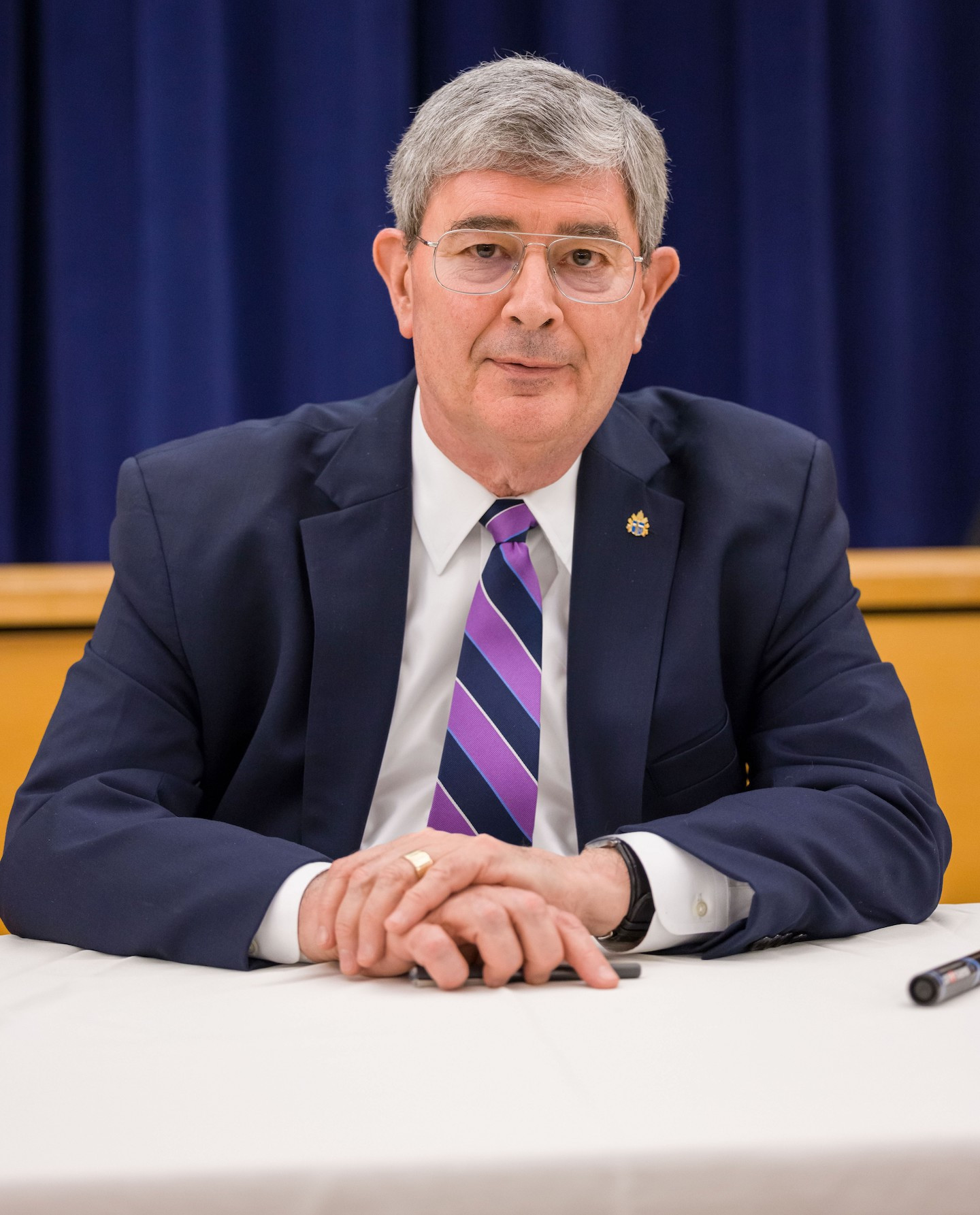WARSAW. John Williams, ninety-two-year-old laureate conductor of the Boston Pops Orchestra, has composed some of the most memorable pop-orchestral music of our time, including the themes for Star Wars, Superman, E.T., Jaws, Jurassic Park, and Indiana Jones. In 1996, when NBC commissioned Williams to write a one-movement piece for the Games of the XXVI Olympiad, held in Atlanta, Williams called it “Summon the Heroes.” Listening to it today brings to my mind Olympic heroes from over half a century: multitalented Rafer Johnson, elegant Peggy Fleming, Billy Mills of the Oglala Sioux, the “Miracle on Ice” U.S. hockey team of 1980, Kobe Bryant and the 2008 “Redeem Team” of NBA stars putting their egos aside for coach Mike Krzyzewski, the incomparable Katie Ledecky.
Then, walking down Warsaw’s Krakowskie Przedmieście on a brilliant May morning, I was introduced to another summoning of heroes by my friend Maria Ciostek. These heroes will never be memorialized by a John Williams composition. But their courage was nonetheless just as moving—and as indicative of the nobility of which human beings are capable—as that of any Olympic athlete.
Their stories are now being told because of a hero-of-heroes, Witold Pilecki.
Having been demobilized after fighting the Nazi invaders of September 1939 as commander of a cavalry platoon in the 19th Polish Infantry Division, Pilecki and another Polish officer made their way to Warsaw, where they launched the Secret Polish Army as an underground resistance movement. In 1940, its eight thousand members became part of the Armia Krajowa, the Home Army (AK) that was the fighting arm of the Polish government-in-exile in London.
Later that year, Pilecki conceived a plan of breathtaking daring: He would get himself arrested and sent to the Auschwitz concentration camp, where he would organize a resistance movement and get information on the savagery underway there back to the AK leadership, which would then inform the Polish authorities in London. For two years, Pilecki carried out this plan as Prisoner 4859. By 1943, the Birkenau (or Auschwitz II) death camp had been built nearby, and with the mass slaughter of European Jews underway there, Pilecki determined to escape so that he could report in person on this unprecedented wickedness. The British considered his report an exaggeration; without Allied air support, an attack on the Auschwitz-Birkenau complex could not be mounted by the Polish Parachute Brigade that had been raised in exile; so, nothing was done.
Witold Pilecki fought in the Warsaw Uprising of August–September 1944, leading a sector of the AK resistance that held out against fierce German attacks for two weeks. He was then captured and spent the war’s last months in German POW camps. His postwar resistance to the communist usurpation of Poland’s liberties got him arrested by the secret police and after a show trial, in which a fellow Auschwitz survivor turned communist apparatchik lied about Pilecki’s activities, Witold Pilecki was shot on May 25, 1948, at Warsaw’s Mokotów prison. His remains have never been found.
His memory and work live on, however, in the Pilecki Institute, which, as its literature notes, “has been established to facilitate the interdisciplinary and international analysis of issues and developments that were of key importance for the political history of the 20th century, namely the Nazi and Soviet totalitarian regimes and the global consequences of their actions.” The institute’s work includes age-appropriate lessons, workshops, and classes for elementary, secondary, and university students. The drama of the era in which Witold Pilecki lived and died might as well be ancient history for these young people—although the lessons from that age of horrors are entirely relevant today, and must be kneaded into the moral and political texture of twenty-first-century free societies.
The institute also sponsors a permanent exhibition, “Called by Name,” where I spent an hour pondering the stories of ordinary Polish men and women who had sheltered, fed, and rescued Jews fleeing Nazi persecution; had paid for their solidarity and charity with their lives; and who had been forgotten until the institute began doing research that brought the names of these deceased and unmemorialized heroes back from historical oblivion. Over a dozen such cases are described, with photos, in the exhibit across the street from the elegant Bristol Hotel: a visual exploration of the lives of some very modern saints, who may never be canonized but whose place at the Wedding Feast of the Lamb, like that of Witold Pilecki, is certainly secured.
George Weigel’s column “The Catholic Difference” is syndicated by the Denver Catholic, the official publication of the Archdiocese of Denver.

George Weigel is Distinguished Senior Fellow of Washington, D.C.’s Ethics and Public Policy Center, where he holds the William E. Simon Chair in Catholic Studies.
First Things depends on its subscribers and supporters. Join the conversation and make a contribution today.
Click here to make a donation.
Click here to subscribe to First Things.
Image by Mariochom, licensed via Creative Commons. Image cropped.



